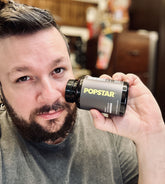Nymphomaniac is an older and often controversial term historically used to describe excessive or uncontrollable sexual desire, particularly in women. In contemporary medical discussions, this concept overlaps with what professionals may call hypersexuality or compulsive sexual behavior. Despite changing perspectives, many people still seek information about the term “Nymphomaniac” from both historical and modern viewpoints. In this article, we will explore definitions, causes, symptoms, and potential treatments. We will also address frequently asked questions to help clarify common misconceptions and outline practical steps toward managing and understanding excessive sexual needs.
Table of Contents
- Definition
- Nymphomaniac vs. Libriosis vs. Satyriasis
- Historical Context
- Risk Factors and Causes
- Symptoms and Signs
- Health Implications
- Nymphomania and Relationship Dynamics
- FAQs
- Treatment and Management
- When to Seek Help
- Disclaimer
- References
Definition
The word “Nymphomaniac” is derived from the Greek words “nymphē," referring to a maiden or bride, and “mania,” meaning madness. Historically, it primarily labeled women whose sexual appetites were perceived as abnormally high or beyond social norms. Over time, the term has become less commonly used in medical contexts due to its pejorative undertones and the shift toward more accurate and inclusive clinical definitions such as “hypersexual disorder” or “compulsive sexual behavior.”
In modern discourse, “Nymphomania” is not widely recognized as a formal clinical diagnosis. Instead, mental health practitioners often discuss hypersexuality, which may affect people of any gender. Key features of hypersexual behavior can include a preoccupation with sexual thoughts, compulsive sexual activities, and the inability to control or reduce these behaviors despite negative consequences. The stigmatizing nature of “Nymphomaniac” highlights the importance of updated terminology that fosters understanding and empathy rather than judgment.
While “Nymphomaniac” remains prevalent in pop culture and colloquial usage, anyone who experiences distress or impairment related to high sexual desire should seek professional evaluation. The goal is to differentiate between a healthy libido and pathological matters that may indicate underlying psychological or physiological issues. By doing so, individuals can understand their situations better and engage with mental health professionals for support and treatment when necessary.
Nymphomaniac vs. Libriosis vs. Satyriasis
When exploring excessive sexual desire, several terms crop up in both historical and modern contexts. Besides “Nymphomaniac,” other labels include “libriosis” and “satyriasis.” While all can point to intense sexual urges, each historically had distinct connotations:
- Nymphomaniac: Historically used to describe women displaying severe or unbridled sexual desire. The term carries moral, social, and cultural baggage, often tied to the stigmatization of female sexuality.
- Libriosis: A less common term, but sometimes used to depict strong sexual desire or “libidinous” behavior. Generally lacks the gendered use found in “Nymphomaniac” and “Satyriasis.”
- Satyriasis: An archaic label for men exhibiting excessive or insatiable sexual desire, roughly paralleling “Nymphomaniac” in male contexts.
In today’s medical practice, hypersexual behavior is commonly used to describe persistent, uncontrollable sexual thoughts or actions that cause personal distress. Regardless of the term, the professional approach focuses on assessing underlying causes—ranging from mental health disorders to neurological imbalances—and formulating evidence-based treatments that address the individual’s specific needs.
It’s best to consider “Nymphomaniac,” “Satyriasis,” and related archaic terms as outdated in a formal clinical sense, even if they persist in casual or historical usage. By shifting to terms such as “hypersexuality” or “compulsive sexual behavior,” modern healthcare practitioners emphasize evidence-based compassion when diagnosing and treating individuals with extremely high libidos or sexual compulsions.
Historical Context
From the late 19th century into the early 20th century, “Nymphomania” was often discussed under the umbrella of “female hysteria”—a broad and now discredited concept in which many behaviors in women deemed socially unacceptable were medicalized. Men’s sexual interests often escaped similar categorization, partly reflecting patriarchal structures of society. Additionally, social norms held that women were inclined toward subdued or modest sexual behavior. Hence, women exhibiting higher sexual interest were frequently diagnosed with “Nymphomania,” assumed to be pathological.
Philosophical thinkers and physicians alike made attempts to classify and treat these so-called disorders. Approaches ranged from moral instruction and institutionalization to, in more extreme cases, surgical interventions. The history reveals that a genuine psychological or physiological issue was not always the root cause of the “condition”; rather, social and cultural biases shaped the categorization. Over time, feminist movements and progressive attitudes toward sexuality helped change perceptions surrounding female libido, emphasizing equality and mutual respect for sexual desire in both women and men.
As Western medicine grew more evidence-based, many previously recognized “female maladies” were either discarded or reclassified, acknowledging that human sexuality is complex, variable, and influenced by factors like hormones, mood, and personal experiences. Accordingly, the term “Nymphomaniac” has fallen out of favor in most medical texts. Nonetheless, historically, it has had a considerable influence on public perception and the stigmatization of women who simply displayed robust libidos. Understanding this background helps contextualize modern viewpoints on sexual well-being, thereby encouraging a more empathetic approach to diagnosing and managing diverse sexual drives.
This historical shift also brought forward new frameworks for understanding sexual desire. Modern research focuses on neurobiological factors, psychosocial triggers, relationship contexts, and cultural norms—none of which can be fully captured by older categories like “Nymphomaniac” alone. This contextualization is crucial for men’s health resources as well, enabling a holistic perspective on human sexuality without automatically pathologizing high libido.
Risk Factors and Causes
Although the term “Nymphomaniac” might connote a single root cause or personality type, causes for high or compulsive sexual behavior can be multifaceted. Factors span physiological, psychological, and sociocultural domains. In modern discourse, issues labeled under hypersexuality or compulsive sexual behavior typically reveal underlying complexities that require proper evaluation:
- Psychological Influences: Conditions like anxiety, depression, post-traumatic stress disorder (PTSD), or personality disorders can manifest as hypersexual tendencies in certain individuals. Emotional distress might drive a person to seek repeated sexual encounters as a coping mechanism.
- Neurological and Hormonal Factors: An imbalance in certain neurotransmitters (e.g., dopamine, serotonin) or hormones like testosterone can influence sexual impulses. In rarer instances, damage to specific brain regions (for instance, to the frontal lobe) may lead to disinhibited behavior, including compulsive sexuality.
- Use of Stimulants or Substances: Certain drugs, such as cocaine or amphetamines, are known to increase impulsive behaviors, including sexual ones. Alcohol, while more common, can also affect judgment, promoting riskier sexual engagement or amplified desire.
- Past Trauma: Individuals with a history of sexual or emotional trauma may experience a dysregulated relationship with intimacy. Sometimes they may avoid sex entirely, while in other cases, they might gravitate toward hypersexual behavior. Both responses can be symptomatic of unresolved trauma.
- Sociocultural Pressures: Societal or cultural norms might contribute to the labeling of certain behaviors as pathological. For instance, a person in a very conservative setting might be labeled a “Nymphomaniac” for behaviors that in more liberal contexts would be considered within the realm of normal exploration.
Pinpointing the primary cause or risk factors usually entails an in-depth clinical assessment, possibly involving psychological evaluations, medical workups, and a review of personal and family history. Understanding whether high sexual desire is maladaptive or simply part of a broader personal inclination is critical to guiding effective interventions. For this reason, experts advocate refraining from judgmental terms like “Nymphomaniac” and emphasizing the importance of exploring underlying etiologies and potential mental health challenges.
A nuanced view acknowledges that sexual desire exists on a spectrum, shaped by biology, psychology, culture, and life experiences. Factors like a history of physical or emotional neglect, high-stress levels, or chronic mental health issues can contribute to disordered behaviors. By addressing these multifaceted issues, individuals have a greater chance of achieving healthy sexual relationships and balanced lifestyles.
Symptoms and Signs
Clinical discussions about “Nymphomania” or hypersexuality typically prioritize patterns of excessive or uncontrollable sexual thoughts and actions that cause notable distress or dysfunction. While a simple high sex drive is not necessarily pathological, certain red flags may indicate a more serious underlying condition. Common signs can include:
- Persistent Preoccupation: Constant and intrusive sexual thoughts that interfere with daily tasks and responsibilities.
- Compulsive or Impulsive Behavior: Engaging in sexual activities—whether with partners or through pornography—to the extent that it disrupts normal routines, relationships, or occupational functioning.
- Escalation Over Time: A need to increase the intensity or frequency of sexual activities to achieve satisfaction or relief from tension, indicating a potential addictive pattern.
- Continued Behavior Despite Consequences: Persisting in risky sexual behavior even when it leads to relationship conflicts, health risks, or emotional turmoil.
- Feelings of Guilt or Shame: Recognizing the behavior as problematic but feeling unable to control it, leading to a cycle of shame and continued involvement in unwanted sexual behaviors.
- Distress or Anxiety if Unable to Engage: Feeling restless, anxious, or irritable when unable to engage in the desired sexual activities.
It’s important to distinguish enthusiastic sexuality from pathology. Not everyone who enjoys frequent sexual activity meets these criteria. The primary difference is the presence of significant impairment in social, occupational, or other vital areas of functioning, paired with ongoing mental or emotional distress. Individuals grappling with excessive sexual desire often benefit from an environment where they can explore the root drivers—be they personal, biochemical, or psychosocial—without fear of stigma.
Furthermore, tracking the duration of symptoms is another important factor. If periods of heightened sexual drive are temporary and correlate to specific stressors or changes (such as medication side effects), then the situation may resolve without extensive intervention. However, if symptoms persist for extended periods (e.g., six months or longer), and interfere with well-being, professional help is advised.
Health Implications
Unmanaged compulsive sexual behavior carries significant health risks. These can range from emotional and relational strains to physical health dangers. Some potentially serious implications include:
- Sexually Transmitted Infections (STIs): Engaging in unprotected or promiscuous sexual activity elevates the risk of STIs, including HIV, gonorrhea, or chlamydia. Regular testing and responsible practices are particularly crucial.
- Unplanned Pregnancies: Inconsistent or absent contraception can lead to unintended pregnancies, adding additional stress to already strained emotional or financial resources.
- Emotional Distress: Feelings of guilt, shame, anxiety, or depression can arise when sexual impulses become overwhelming, further complicating mental health.
- Relationship Conflicts: Partners may struggle with betrayal, mistrust, or dissatisfaction if excessive sexual behavior ceases to be mutually consensual or respectful. This strain could lead to separations, divorces, or long-term resentment.
- Co-occurring Disorders: Substance abuse, mood disorders, and other mental health issues often coexist with hypersexuality. Neglecting to address these contributing conditions can compound overall distress.
These risks underscore the importance of a holistic approach to men’s health. Addressing high sexual desire or compulsive sexual tendencies requires more than moral judgments or simplistic advice. Instead, proper assessments aim to uncover possible underlying issues—hormonal imbalances, dopamine dysregulation, psychological trauma, or environmental triggers—that may be contributing to the escalation of risky or distressing behaviors. When these contributing factors are understood, targeted interventions become more effective, safeguarding emotional well-being, preserving healthy relationships, and minimizing the dangers that arise from unregulated sexual pursuits.
The stigma historically tied to “Nymphomania” highlights the need for modern, sensitive approaches to treat hypersexuality. By providing education and creating therapeutic environments, professionals empower individuals to manage their behaviors in ways that promote fulfillment, safety, and an improved quality of life.
Nymphomania and Relationship Dynamics
Sexual desire exists along a broad continuum. When it becomes extreme, it can significantly affect relationships, including marital or long-term partnerships. For men living with a partner who exhibits—or believes they exhibit—“Nymphomania,” complications may arise if desires and expectations become mismatched. Some common relationship stressors can include:
- Misaligned Libidos: One partner may have a moderate interest in sex while the other grapples with relentless sexual urges. Negotiating frequency and intensity can become a point of conflict when unmet demands lead to arguments or dissatisfaction.
- Emotional Intimacy vs. Physical Focus: In some cases of compulsive sexual behavior, the person with high libido may place disproportionate emphasis on physical intimacy. The other partner may feel that emotional closeness is sidelined, eroding trust or a sense of genuine connection.
- Feelings of Inadequacy: The partner of someone with extremely high sexual needs may struggle to keep pace, leading to concerns about their own sexual “performance” or personal worth.
- Communication Gaps: Discussing sexual frustration or taboo topics openly can be difficult. Without healthy communication, couples risk drifting apart or harboring unspoken resentments.
Mitigating these challenges often requires couple-focused interventions, such as relationship counseling or sex therapy. These avenues allow each partner to share concerns, set boundaries, and explore strategies for achieving a satisfying sex life that respects the physical and emotional well-being of both individuals. Techniques like mindful intimacy exercises can foster a balance between emotional connection and physical gratification. Furthermore, open discussions about triggers, vulnerabilities, and coping mechanisms may reduce conflict and frustration, placing emphasis on shared well-being and compassionate understanding.
Additionally, men’s health websites play a crucial role in promoting balanced perspectives on relationships. Acknowledging that, historically, the discussion of sexual desire has disproportionately pathologized women, modern discourse highlights empathy and equality. Healthy relationships hinge on negotiation, respect, and mutual agreement. When episodes of seemingly relentless sexual needs arise, addressing potential underlying issues—be they medical or psychological—benefits all parties involved.
FAQs
Is “Nymphomania” a recognized medical diagnosis today?
No. The term “Nymphomania” is largely historical and is no longer widely accepted as a formal medical diagnosis. Instead, hypersexuality or compulsive sexual behavior are more commonly recognized clinical concepts. These modern terms offer greater nuance and remove the outdated, gendered stigma attached to “Nymphomania.”
Does “Nymphomania” only refer to women?
Historically, yes—it specifically stigmatized women. However, modern understanding recognizes that either gender can experience compulsive sexual behavior. Men with analogous symptoms were historically labeled with “Satyriasis.” In contemporary settings, the concept of hypersexuality applies to people regardless of gender.
What are the main risk factors associated with excessive sexual desire?
Risk factors include underlying mental health issues (anxiety, depression), hormonal or neurological imbalances, past trauma, and substance abuse. In many cases, sociocultural conditions—such as restrictive upbringing or cultural taboos—can complicate how sexual desire is expressed or pathologized.
Can hypersexuality be a symptom of other mental health disorders?
Yes. Excessive or uncontrolled sexual urges sometimes accompany conditions like bipolar disorder, borderline personality disorder, or certain impulse-control disorders. In such cases, treating the underlying mental health issue may alleviate the hypersexual symptoms.
Is there a relationship between pornography use and Nymphomania?
Pornography use can feed into hypersexual tendencies if it becomes compulsive or displaces other responsibilities and relationships. While “Nymphomania” is an outdated term, individuals who excessively consume pornography to manage stress or negative feelings may need professional intervention. Reducing or regulating porn use is often a step in addressing broader behavioral patterns.
Does a high libido automatically mean something is wrong?
Not necessarily. Sexual desire exists on a broad continuum. A high libido becomes concerning if it causes personal distress, relationship strife, or negative health consequences. If there are no problematic effects and intimacy is managed responsibly and consensually, a high libido by itself may not warrant a pathological label.
Can relationship counseling help if one partner feels overwhelmed by the other’s sexual appetite?
Absolutely. Relationship counseling or sex therapy often helps couples navigate a mismatch in sexual desire. Therapists facilitate balanced communication, exploration of emotional needs, and negotiation of boundaries. Some strategies involve scheduling intimacy, practicing mindfulness, or identifying triggers that lead to sexual overdependence.
Are medications available to reduce overwhelming sexual urges?
In some cases, healthcare providers may prescribe medications that alter libido or decrease impulsivity. Antidepressants (SSRIs) or certain hormone-regulating drugs can sometimes help if hypersexual urges stem from specific chemical imbalances. However, medication is usually combined with therapy, lifestyle changes, and ongoing support for the best outcomes.
What is the difference between hypersexuality and sexual addiction?
“Hypersexuality” and “sexual addiction” are often used interchangeably, but many clinicians lean toward “hypersexual disorder” to emphasize underlying psychological or biological factors. Some professional organizations remain cautious about labeling as “addiction” due to differences between substance addictions and behavioral compulsions. Nonetheless, the core issue in both is difficulty regulating sexual behavior despite harmful consequences.
How can family and friends offer support?
Family and friends play a vital role by fostering an empathetic and nonjudgmental environment. Encouraging a loved one to seek professional guidance for persistent sexual compulsions can be enormously beneficial. Educating oneself about the complexity of hypersexuality and refraining from shame-based language or attitudes can lay groundwork for constructive dialogue.
Treatment and Management
Effective treatment for individuals exhibiting signs of hypersexual behavior—previously referred to as “Nymphomania”—often involves a combination of therapeutic interventions, medical evaluations, and possible lifestyle adjustments. The end goal is not to eradicate one’s libido, but to ensure sexual expression is healthy and self-regulated.
- Psychotherapy: Methods like cognitive behavioral therapy (CBT) challenge and restructure unhelpful thought patterns that fuel compulsive actions. CBT can teach coping strategies that reduce cravings and impulsive sexual urges.
- Trauma-Focused Therapy: For those with past trauma, specialized therapies (e.g., EMDR—Eye Movement Desensitization and Reprocessing) can help resolve negative experiences that contribute to hypersexual behaviors.
- Mindfulness Techniques: Mindfulness-based therapies emphasize staying present in the moment, which can mitigate automatic, impulsive behaviors. Meditation, yoga, or breathing exercises can also aid in managing stress and anxiety triggers related to sexual compulsions.
- Medical Interventions: Depending on a person’s hormone levels or neurological profile, clinicians might recommend medications to balance brain chemistry. This might include SSRIs or other agents that reduce libido safely under medical supervision.
- Support Groups: Peer support through anonymous groups—whether in person or online—often fosters a sense of community and reduces isolation. Many groups follow a framework similar to 12-step programs but focus on sexual behavior.
- Couples or Family Therapy: When a partner or family is deeply affected, tailored sessions that enhance mutual understanding and outline clear boundaries can be beneficial.
Additionally, lifestyle changes—like reducing substance use, adopting regular physical exercise, and following consistent sleep schedules—can improve emotional stability and reduce compulsive behaviors. Professional guidance ensures that interventions are evidence-based and tailored to a person’s specific situation. Effective treatment promotes not only healthier sexual relationships but also an overall improved quality of life.
When to Seek Help
It’s common to have fluctuations in sexual desire over a lifetime. Periods of elevated libido may occur due to hormonal changes, psychological states, or relationship factors. However, it’s important to consult a qualified mental health professional or primary care physician under these circumstances:
- If your sexual urges seem uncontrollable or recurrently interfere with daily responsibilities.
- If you experience ongoing distress or shame tied to sexual behavior and struggles to control it.
- If your relationships or personal well-being suffer due to constant sexual preoccupations.
- If you suspect an underlying mental health condition, such as depression or anxiety, co-occurring with sexual obsessions.
- If financial, legal, or social consequences arise from impulsive sexual choices.
Early intervention is key. Consulting a professional can help identify underlying triggers, such as unresolved emotional issues or hormonal imbalances, and establish a plan for coping strategies, medication, or therapy. Acknowledging difficulties in controlling sexual impulses is not a sign of weakness but an important step toward wellness.
Recognizing that “Nymphomania,” in a clinical sense, is outdated underscores the importance of using modern, non-stigmatizing language when seeking help. A mental health specialist can provide a more accurate assessment using current diagnostic criteria for hypersexual or compulsive sexual behavior, ensuring you receive comprehensive care.
Disclaimer
This article offers general information about the historical term “Nymphomania,” practical insights on hypersexuality, and potential treatment avenues. It is not a substitute for professional medical advice. Individuals concerned about their sexual behaviors, mental health, or relationships should seek a personalized evaluation from a qualified healthcare provider. If you suspect you or a loved one is experiencing compulsive sexual behavior, consult a mental health professional immediately. Early detection, compassionate understanding, and empirically supported treatments can significantly improve quality of life.
References
- Carnes, P. (2017). Facing the Shadow: Starting Sexual and Relationship Recovery. Carefree, AZ: Gentle Path Press.
- Kraus, S. W., Voon, V., & Potenza, M. N. (2016). Neurobiology of Compulsive Sexual Behavior: Emerging Science. Current Psychiatry, 15(3), 72–81.
- Kafka, M. P. (2010). Hypersexual Disorder: A Proposed Diagnosis for DSM-5. Archives of Sexual Behavior, 39, 377–400.
- Winters, J., Christoff, K., & Gorzalka, B. B. (2010). Dysregulated Sexual Behavior and Negative Affective States. Archives of Sexual Behavior, 39(1), 1369–1376.
- World Health Organization. (2022). ICD-11 for Mortality and Morbidity Statistics. Retrieved from icd.who.int




















































